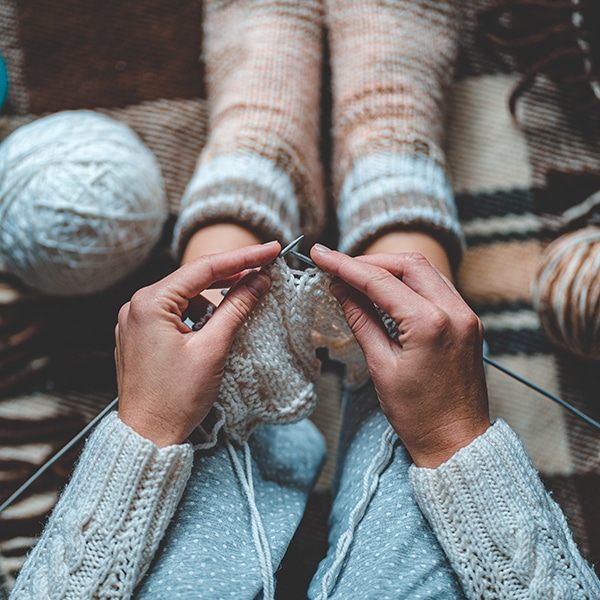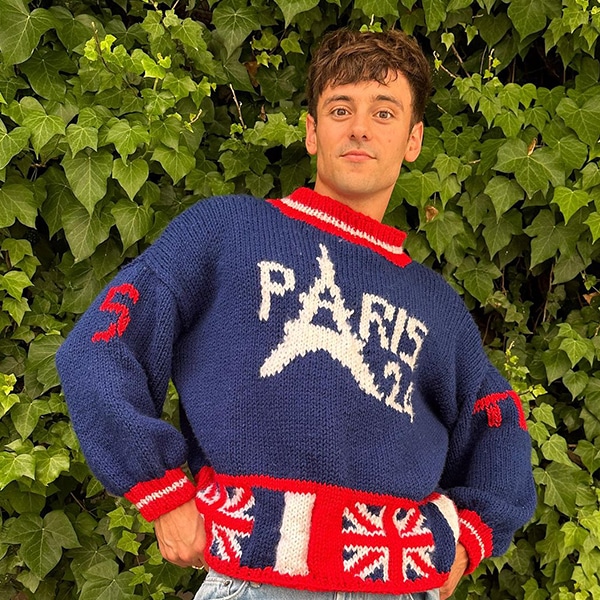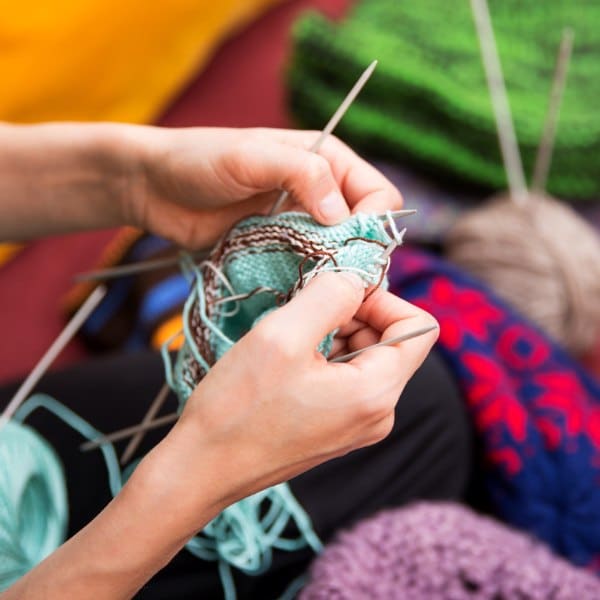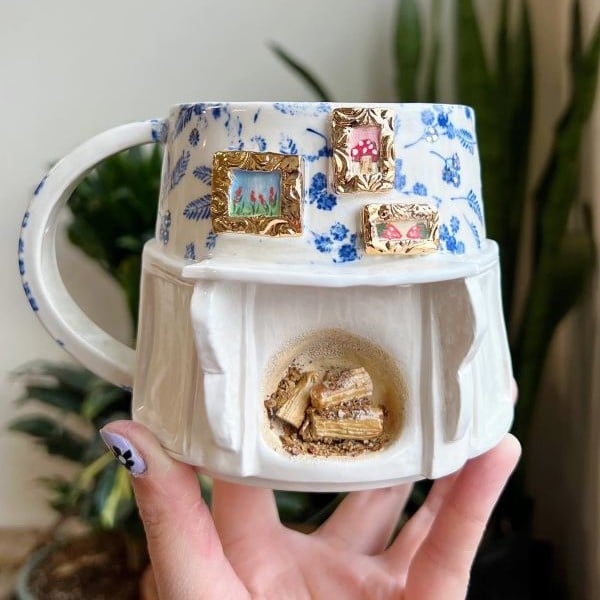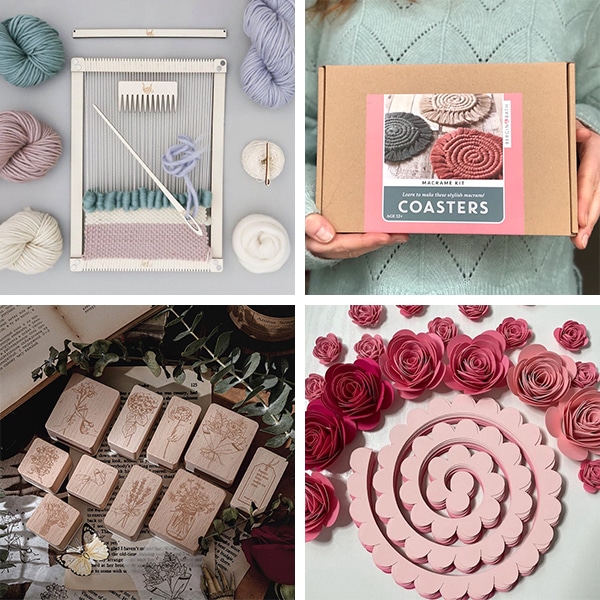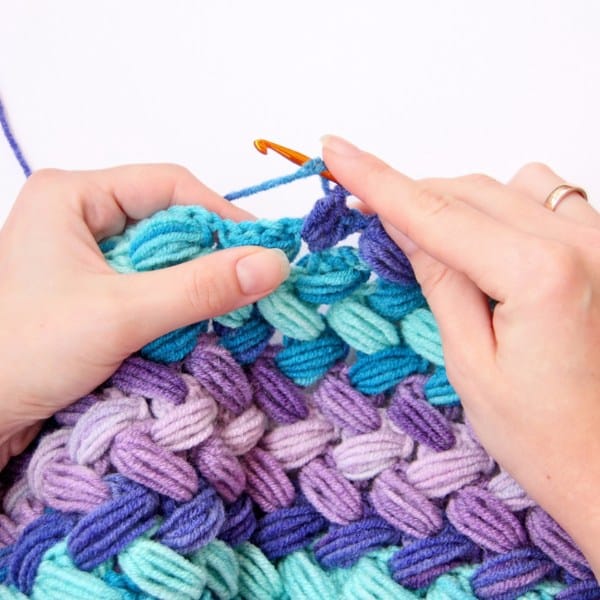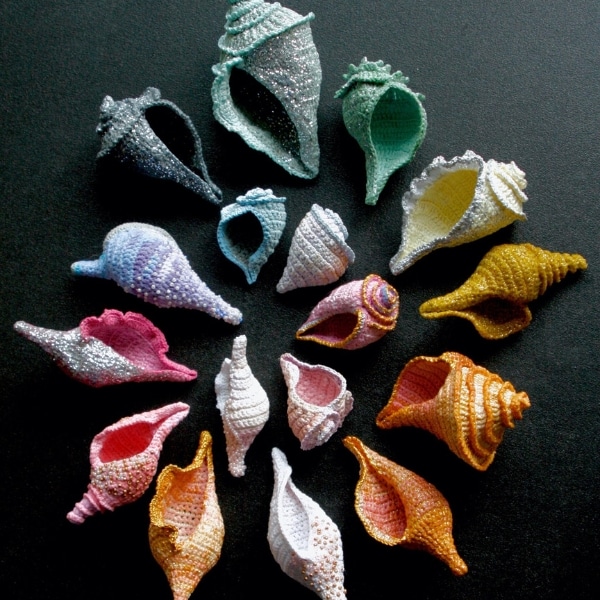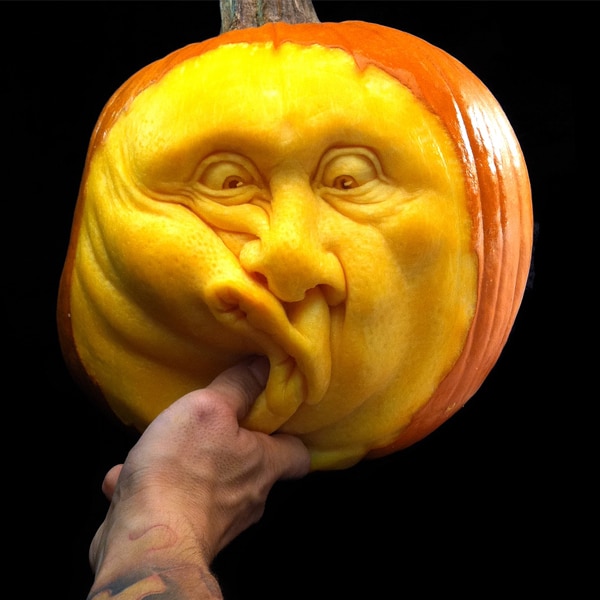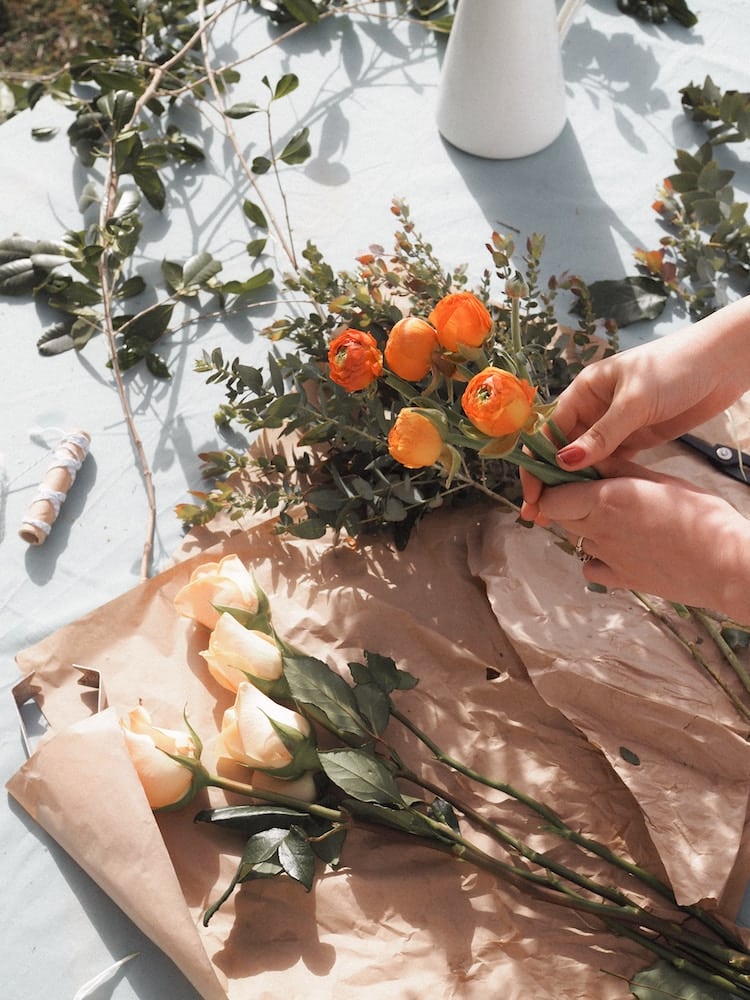
Photo: Social.Cut
This post may contain affiliate links. If you make a purchase, My Modern Met may earn an affiliate commission. Please read our disclosure for more info.
If you’re looking to brighten up your home, fresh flowers are a simple way to do it. You can buy bouquets from the store; but, the longer you live with beautiful blooms, the more compelled you may be to arrange them on your own. Getting started is as simple as growing or buying them—but where do you go from there?
Flower arranging, also known as floral design, is the art of arranging blooms and other plants in an aesthetically pleasing way. Pairing color and texture, it’s a creative activity that you can do as a hobby or as a professional florist.
The tradition of flower arranging is an ancient one. Egyptians during the Old Kingdom (c. 2686–c. 2160 BCE) put flowers into vases (as depicted in paintings and sculptures), while the ancient Greeks made and wore garlands. But flower arranging, as we know it today, really began in the 7th century. It was during this time that Ono No Imoko, the Japanese ambassador to China, founded the first and oldest school of floral art. The range of styles, which emphasize different elements and forms, fall under the general term ikebana.
Flower arranging is likely something you’ve done before, which shows that there’s a low barrier to entry. Scroll down to learn more about what you’ll need for this practice along with helpful ideas and inspiration.
Want to try flower arranging? Read on for a supplies list as well as ideas and tips for making beautiful bouquets.
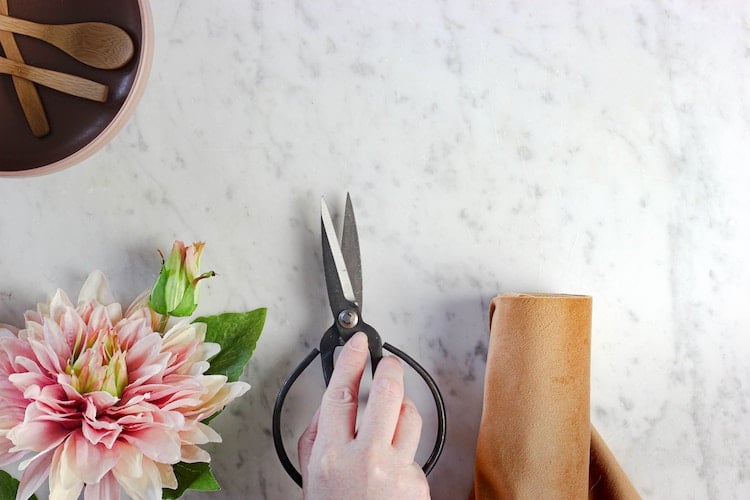
Photo: Micheile Henderson
Flower Arranging Supplies
While there are very few required supplies for building bouquets, there are many tools that allow for easier floral arrangement and longer-lasting blooms.
- Sharp floral shears or scissors. A pair of clean, sharp shears or scissors will make it easier to cut stems and avoid damaging the flowers.
- Vase. This is where your bouquet will live once you’ve finished arranging it. Select something that will comfortably fit all of your flowers as well as complement the style.
- Floral wire and wire cutters. Floral wire is sometimes used in arrangements. Look for a wire that’s specifically designed for floral arrangements (it’s often thin and green).
- Floral foam blocks. Foam is another tool you can use in flower arrangements. Like floral wire, look for foam that’s meant for blooms. Floral foam offers stability and can hold water, increasing the longevity of your plants.
- Crowning Glory Flower Spray. This special floral spray preserves blooms; it’s what florists use to make their flowers last for weeks.
- Rose Stripper Thorn Remover. Run this rose stripper down a stem to remove the sharpest part of the flower’s thorns.
- Bleach. A few drops of bleach in your flower’s water will kill bacteria.
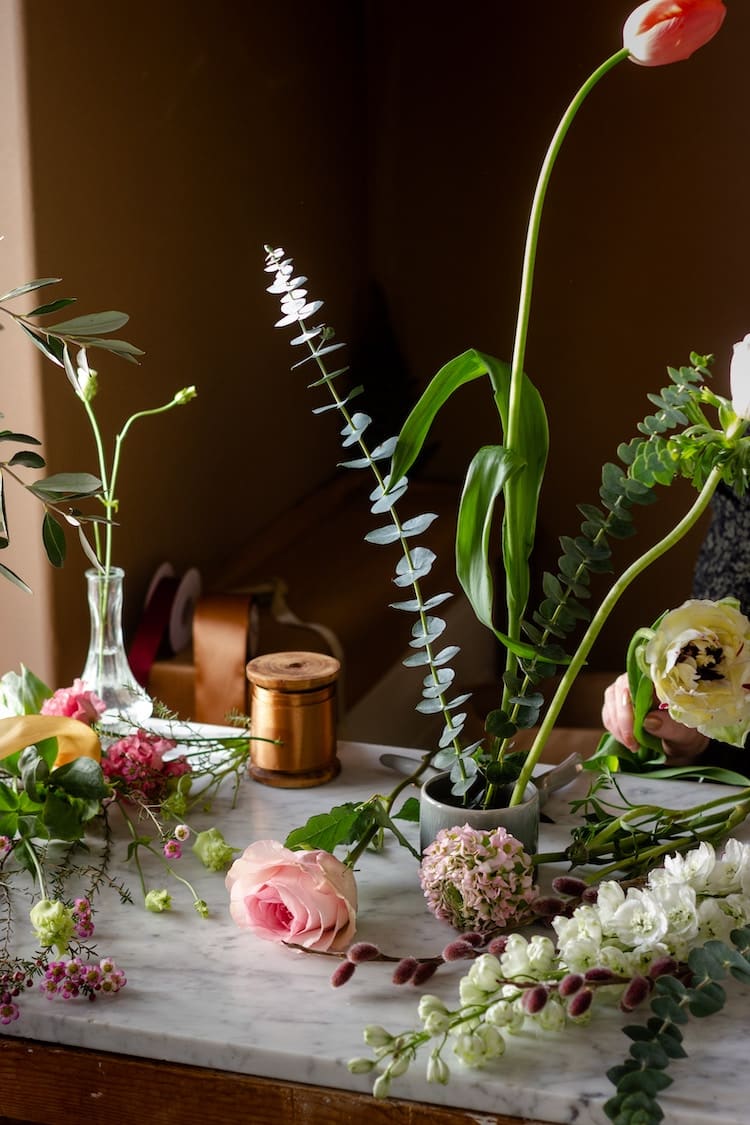
Photo: Micheile Henderson
Tips and Tricks for Flower Arranging
When it comes to assembling a beautiful bouquet, your creativity is your greatest asset. Still, understanding essential design ideas will help elevate your arrangements.
- Cut and submerge your flowers in water. Before you begin arranging, cut an inch or two off your stems at a 45-degree angle. (This will increase the surface area to receive water.) Then, hydrate your flowers. Florists will often dunk their blooms into tepid water for several hours (or even overnight). Doing this allows the stems to soak up a lot of water which helps them maintain freshness.
- Start simple. There’s no need to overcomplicate your arrangements. Start with a few flowers of the same color or type and build from there.
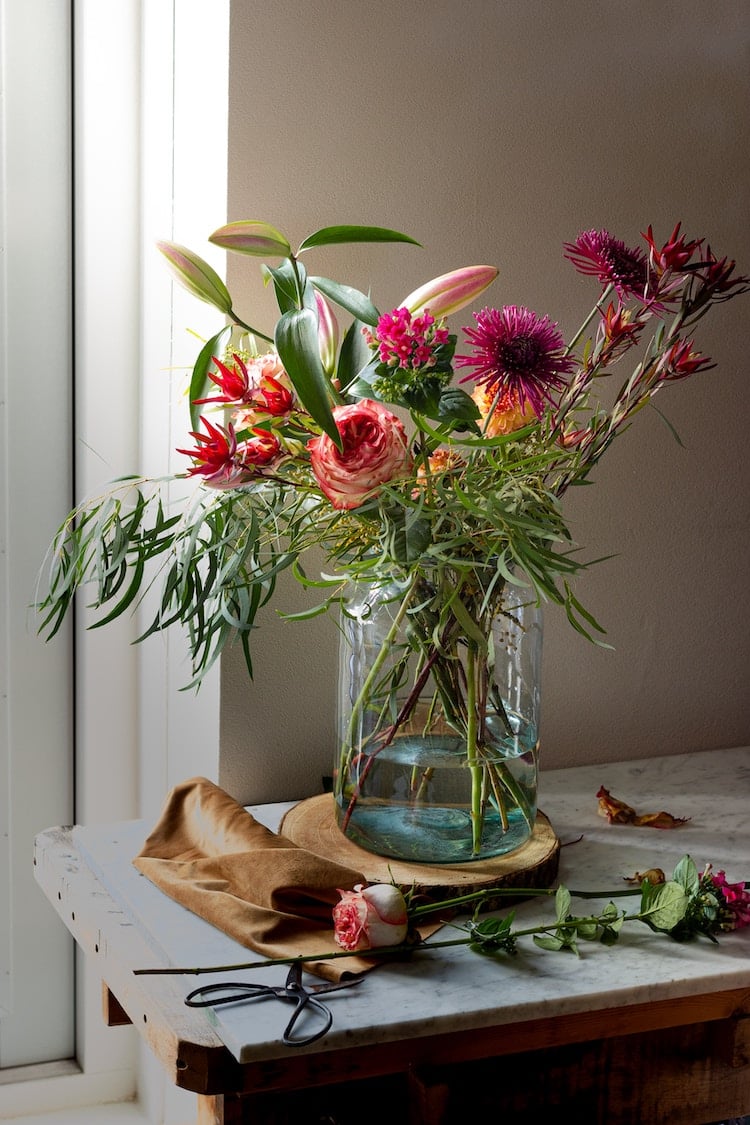
Photo: Micheile Henderson
- Cross to the left, turn to the right. One of the most basic arrangements you can make involves a simple twist. With two or more flowers in your hand, add a new one, crossing it to the left of the blooms already there. Once you’ve done that, turn the arrangement to the right and repeat again and again, until you’ve got the desired bouquet size.
Here’s the technique in action:
- Determine your focal point. The most striking flower arrangements have a centerpiece of the entire thing. This could be color or a particular flower. Whatever you decide, build your arrangement around it.
- Foliage is your friend. Foliage can add texture and depth to your arrangement. Use different types of greenery to create a visual interest that draws in the eye.
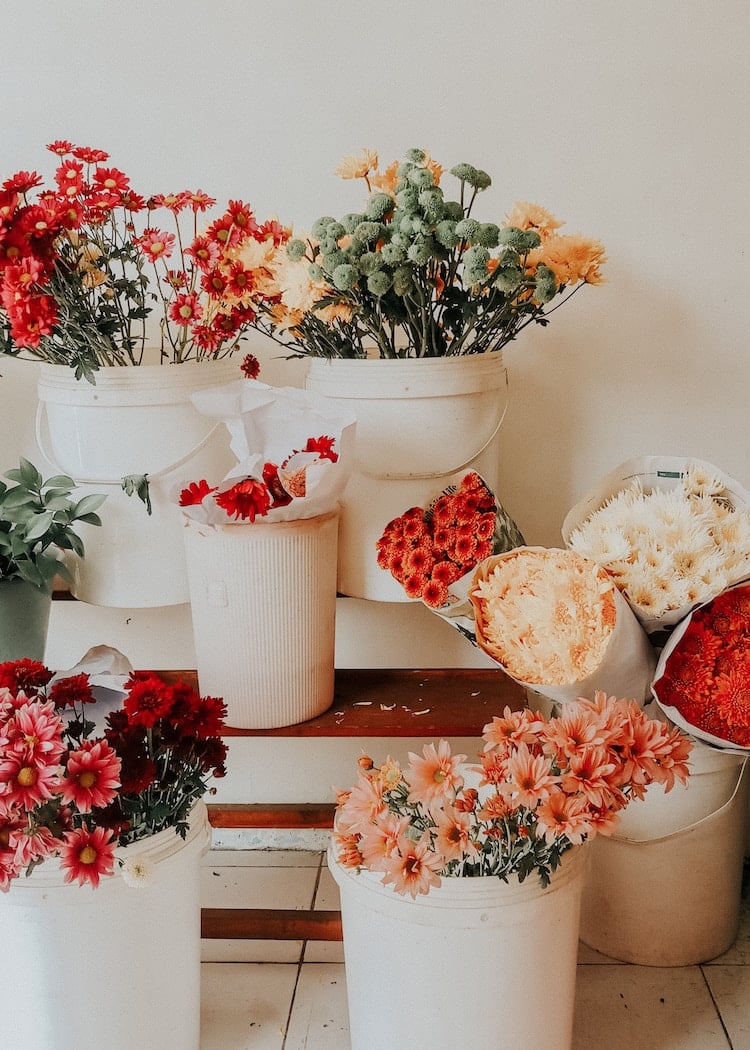
Photo: Dyah Arum
- Play with height. Varying heights are another way to make your arrangement pop. Leave longer flowers in the center and then shorter blooms around the edges. Work carefully, however, and don't cut too much too fast. Height differences that are too great can be visually distracting.
- Consider color. Color is powerful and can evoke a variety of moods. Contrasting hues can offer a bold, even loud, look while the subtle differences in hues can communicate something much softer.
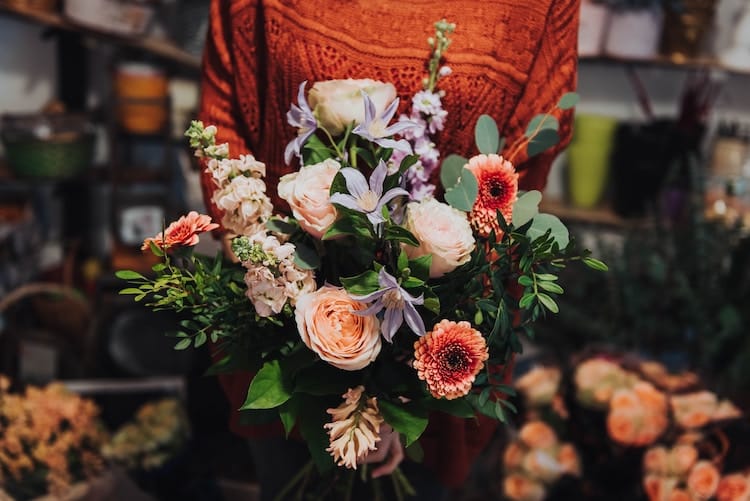
Photo: Artsy Vibes
- Add texture. Your flower arrangement will be much more interesting when you vary texture; it ensures that our eye won’t get bored. This can be done with foliage but also the blooms themselves. Hydrangeas, dahlias, ranunculuses, and proteas are examples of highly textured flowers.
See how floral foam and the right flowers can make an impact:
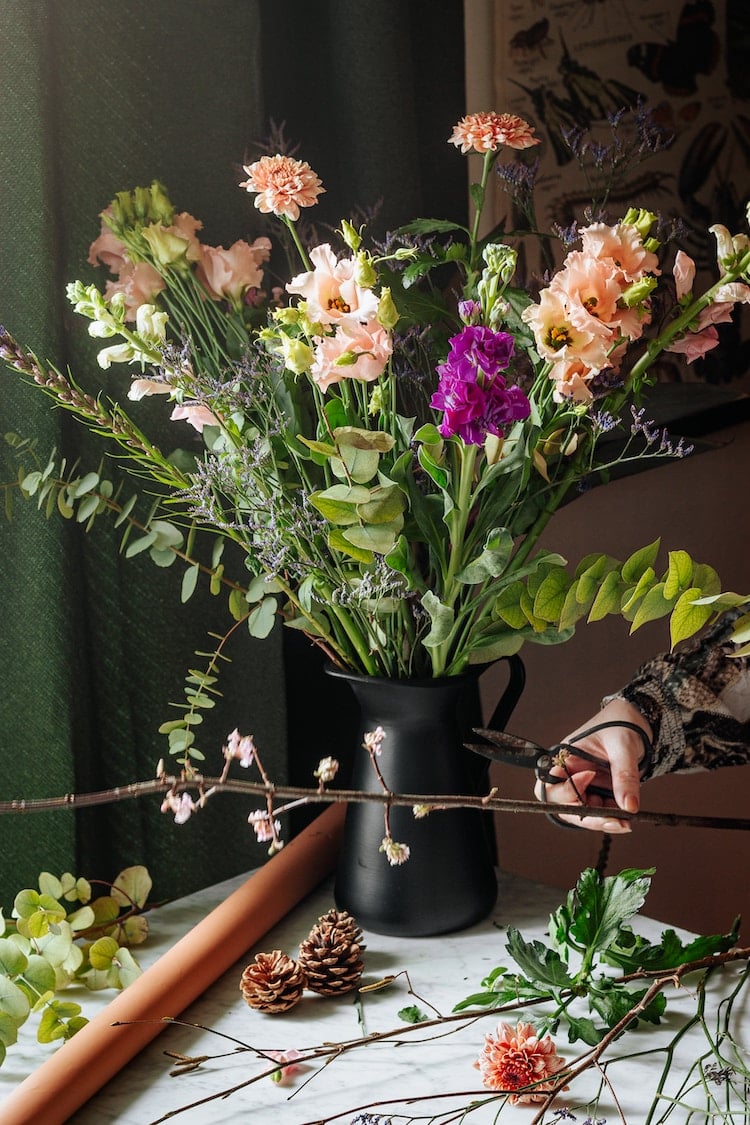
Photo: Micheile Henderson
Flower Arrangement Ideas
See how principles of flower arranging come into practice with these bouquets.
View this post on Instagram
View this post on Instagram
View this post on Instagram
View this post on Instagram
View this post on Instagram
View this post on Instagram
View this post on Instagram
View this post on Instagram
View this post on Instagram
View this post on Instagram
View this post on Instagram
View this post on Instagram
View this post on Instagram
Related Articles:
Artist Paints Ethereal Flowers on Canvas and Shares Her Abstract Techniques With Others
15 Bunches of Dried Flowers To Fill Your Home With Beautiful Blooms Forever
Artist Turns One of the Last NYC Phone Booths into Bursting Display of Flowers












































































